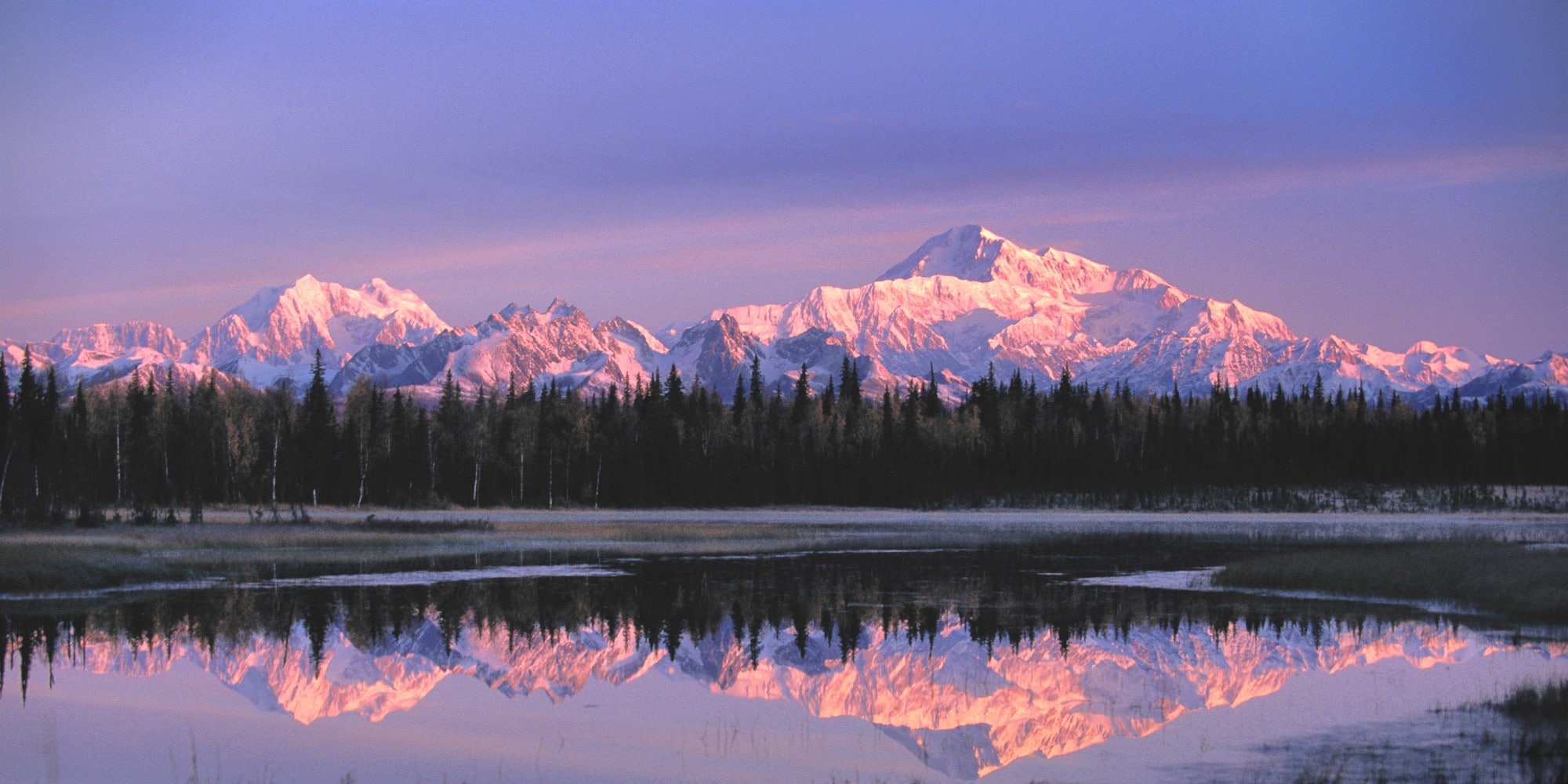Throw a dart at a map of Alaska and you’re very likely to land in the middle of pristine wilderness. The state’s potential can feel intimidating for first-time travelers, so Gyselman recommends avoiding over-planning your inaugural visit. “There’s too much to see,” Gyselman says. “Trying to fit everything in will leave you stressed and unable to fully immerse yourself in the experience. Use your first visit as a scout and commit to going back again.”
Alaska Interior
Denali National Park & Preserve
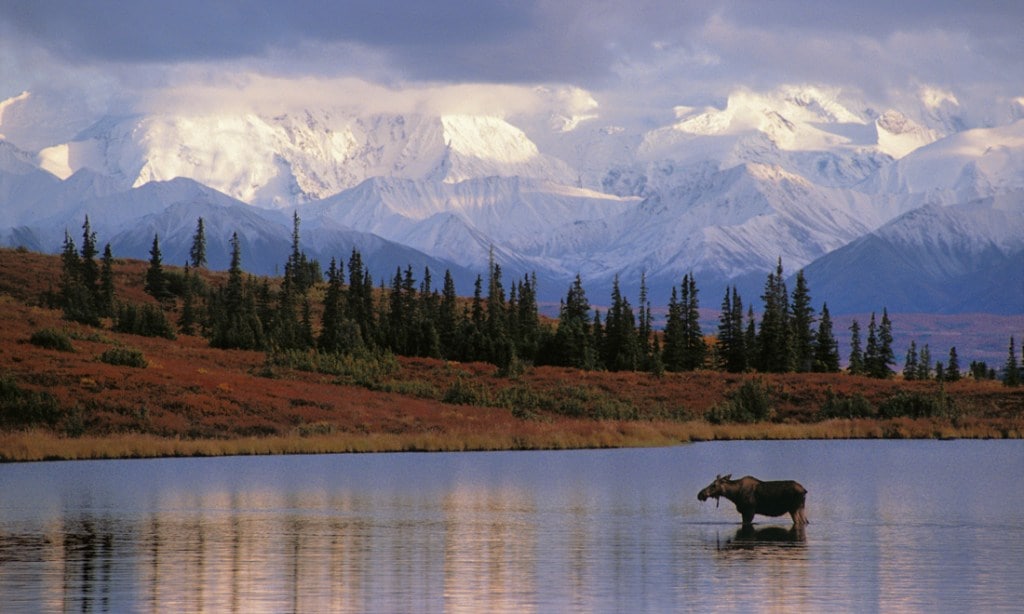
Stopping to admire the scenery in Alaska.
Six million acres of protected wilderness surround North America’s tallest peak. Topping out at 20,310 feet, Denali’s summit overlooks sweeping boreal forests and wide swaths of tundra that fill the spaces between the park’s other snow-covered mountains. And in all that space, there is only one way in.
Denali Park Road stretches for 92 miles through the park’s interior, but public vehicle access is only allowed to Savage River, about 15 miles in. After that, tour buses take travelers between campgrounds and trailheads that lie deeper in the park. Tight control keeps the park wild, and for those who venture beyond the road, there is nothing to stand between you and pure, untamed wilderness. Make sure you’ve got a plan before you go by checking in with the National Park Service about buses, schedules and backcountry permits.
Lake Clark National Park & Preserve
Strings of aquamarine lakes, wide open meadows flecked with wildflowers and snowcapped volcanoes define Lake Clark National Park & Preserve, whose namesake lake stretches for 42 miles. Like so many destinations in Alaska, getting here is half the journey. There are no roads, requiring most visitors to arrive by chartered flight. Once inside, unlimited opportunities await, like fat-biking across Lake Clark’s frozen waters in the winter or walking in the footsteps of the area’s ancestors along the Telaquana Route, which connects Telaquana Lake to Kijik Village.
North Alaska
Gates of the Arctic National Park & Preserve
In the far north, Gates of the Arctic provides a sneak peek at some of the most extreme environments on Earth. Between mountains of granite and limestone, the landscape is cloaked in tundra and tussock-dotted lowlands. In the winter, ice and snow swirl in temperatures that drop to -50 degrees Fahrenheit, and the northern lights dance through the sky. In the summer, backpackers seeking complete solitude will find it on demanding treks across challenging topography. For paddlers, a maze of rivers—including the Alatna and Kobuk—provides the perfect backdrop for the float of a lifetime.
Kobuk Valley National Park
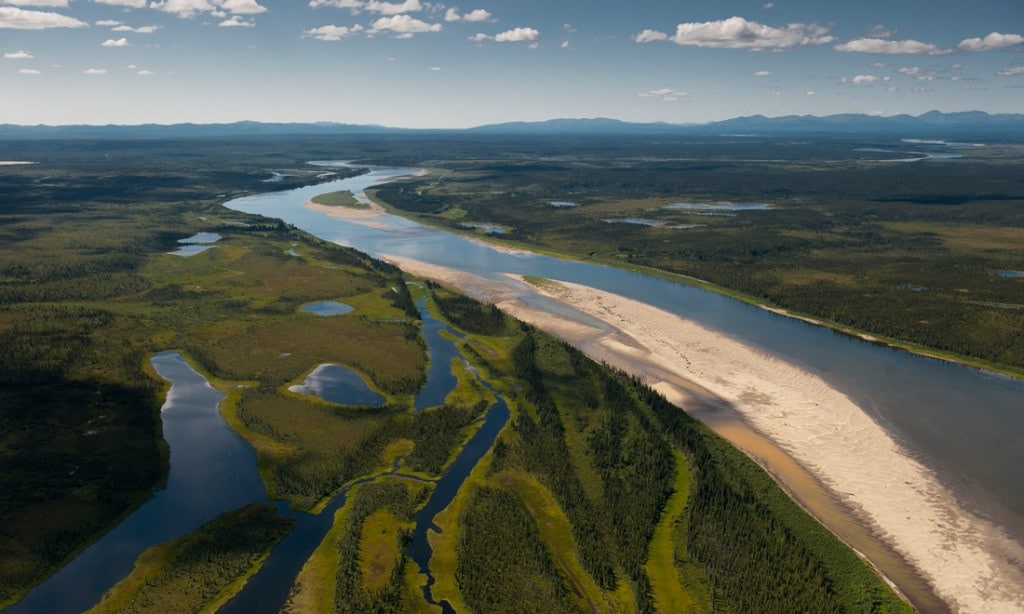
The Kobuk River winds through the Alaskan wilderness. (Photo Credit: Courtesy of The National Park Service)
Sand dunes, migrating caribou and 9,000 years of cultural tradition fill the boundaries of Kobuk Valley National Park. Here, on the doorsteps of the Arctic, you’ll find extreme environments and incredible beauty. Visitors can investigate the area’s cultural heritage, trek along the shores of the Kobuk River and catch glimpses of the northern lights. But be prepared, as there are no roads or services of any kind within the park, and temperatures dip below freezing even in the summer. Kobuk is for those who want ultimate isolation.
Coastal Alaska
Glacier Bay National Park & Preserve

A humpback whale breaches.
Glacier Bay extends for more than 4,688 square miles along Alaska’s Inside Passage. Filled with blue-ice glaciers, moss-covered rain forests and narrow fjords, the park’s wild expanses are reachable only by plane or boat. Those who make the effort to get there are rewarded with incredible backcountry hiking opportunities and the chance to kayak through the park’s fjords. If you’re staying overnight, bring a tent to sleep under the stars in the backcountry or at the Bartlett Cove Campground. For those who like more amenities, look no further than the historic Glacier Bay Lodge, which offers the only hotel accommodations within the park.
Kenai Fjords National Park

A glacier in Alaska’s Kenai Fjords National Park. (Photo Credit: Phillip Sauerbeck)
Home to the 700-square-mile Harding Icefield, Kenai Fjords National Park has something for everyone. Kayakers can spend their days exploring glacier-framed fjords and their nights camping out on rugged coastlines. Hikers can don crampons for a trek along the Harding Icefield (8.2 miles), and wildlife seekers can hop on a guided boat tour to watch for orcas, humpbacks, sea otters and other marine mammals who spend their summers in the fjords’ protected waters. In the off-season, snowshoers and cross-country skiers can enjoy rewarding backcountry conditions. For more creature comforts and a rustic setting, book one of the public-use coastal cabins. In the winter, skiers can hang their poles at a forest service cabin near Exit Glacier.
Wrangell-St. Elias National Park & Preserve
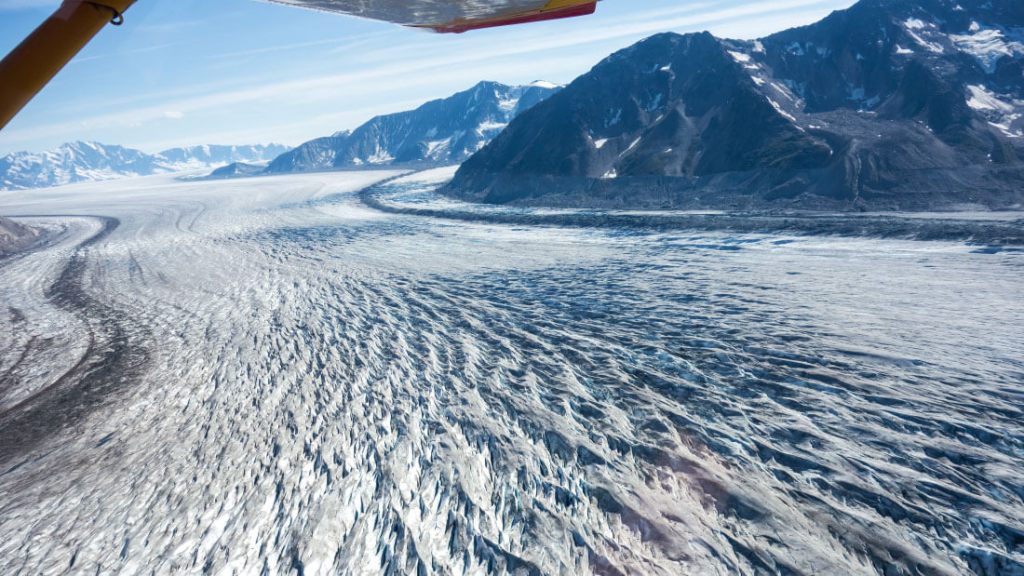
Larger than six Yellowstones combined, at 13 million acres, Wrangell St. Elias is the largest national park in the U.S.
Claiming 13.2 million acres, America’s largest national park is the size of Yosemite, Yellowstone and Switzerland combined. It’s home to four mountain ranges that converge to create a smattering of soaring peaks, active volcanoes, pale blue glaciers and nine of the highest mountains in North America. Between them, countless rivers crisscross wide stretches of lowland forests and fields of lichen where caribou roam.
Where the park meets the Gulf of Alaska, over 150 miles of coastline define its southern boundaries. Visitors can explore the area’s copper- and gold-mining past in the communities of McCarthy and Kennecott and get up-close views of mountain ranges from Nabesna in the north or Copper Center in the west. Kayakers can reach the coast by plane or boat, usually from Juneau. But for those that want a truly epic introduction, the park’s wide open backcountry beckons.
Katmai National Park & Preserve
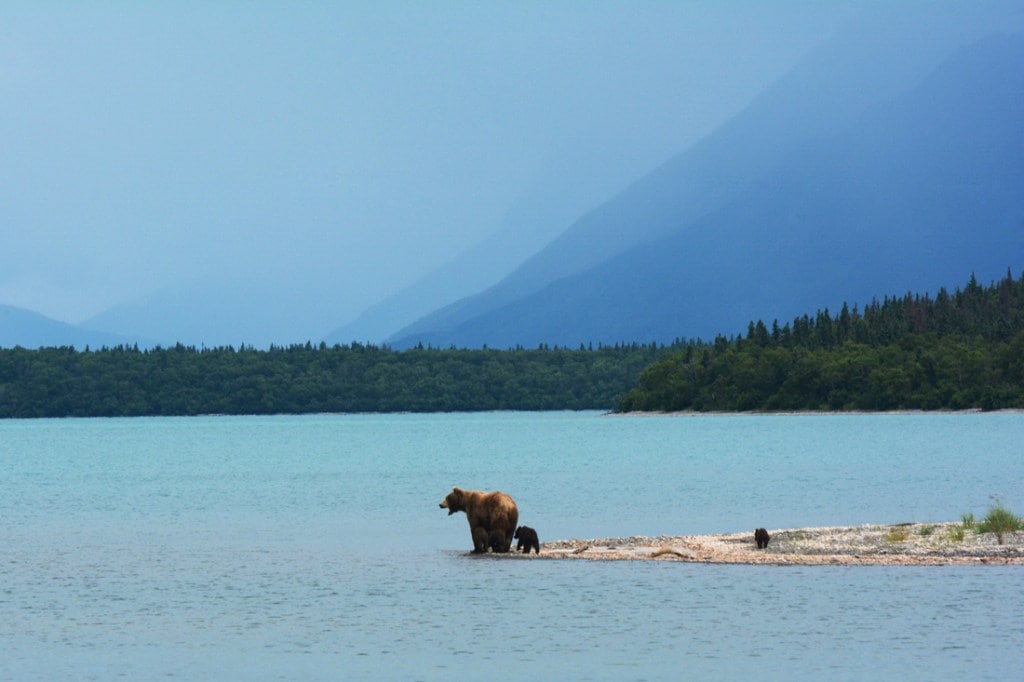
A brown bear and her cubs at Katmai National Park & Preserve. (Photo Credit: Paxson Woelber)
Even if you’ve never heard of it, you’re probably familiar with Katmai’s most famous attraction: the brown bears at Brooks River. Hungry bears congregate near Brooks Camp to snatch spawning salmon as they leap out of the water to navigate the river’s falls. The spectacle became so popular that a webcam was installed, which now offers anyone with an Internet connection the chance to watch the whole thing live. But those who come to Katmai just for the bears are missing out.
Isolated in Alaska’s southwestern corner, Katmai National Park & Preserve gives visitors the chance to see the powerful impact of the largest volcanic eruption of the 20th century. In 1912, a new volcano, Novarupta, formed, then erupted for more than two and a half days, covering the landscape in a blanket of ash and magma.
Backcountry hiking trips into the Valley of a Thousand Smokes are the best way to see this scarred, yet starkly beautiful environment. Visitors should take special caution to learn about the dangers of trekking across the ash-covered landscape.
More interested in the best activities in Alaska? Check out Uncommon Path to find more information on the last great frontier.
